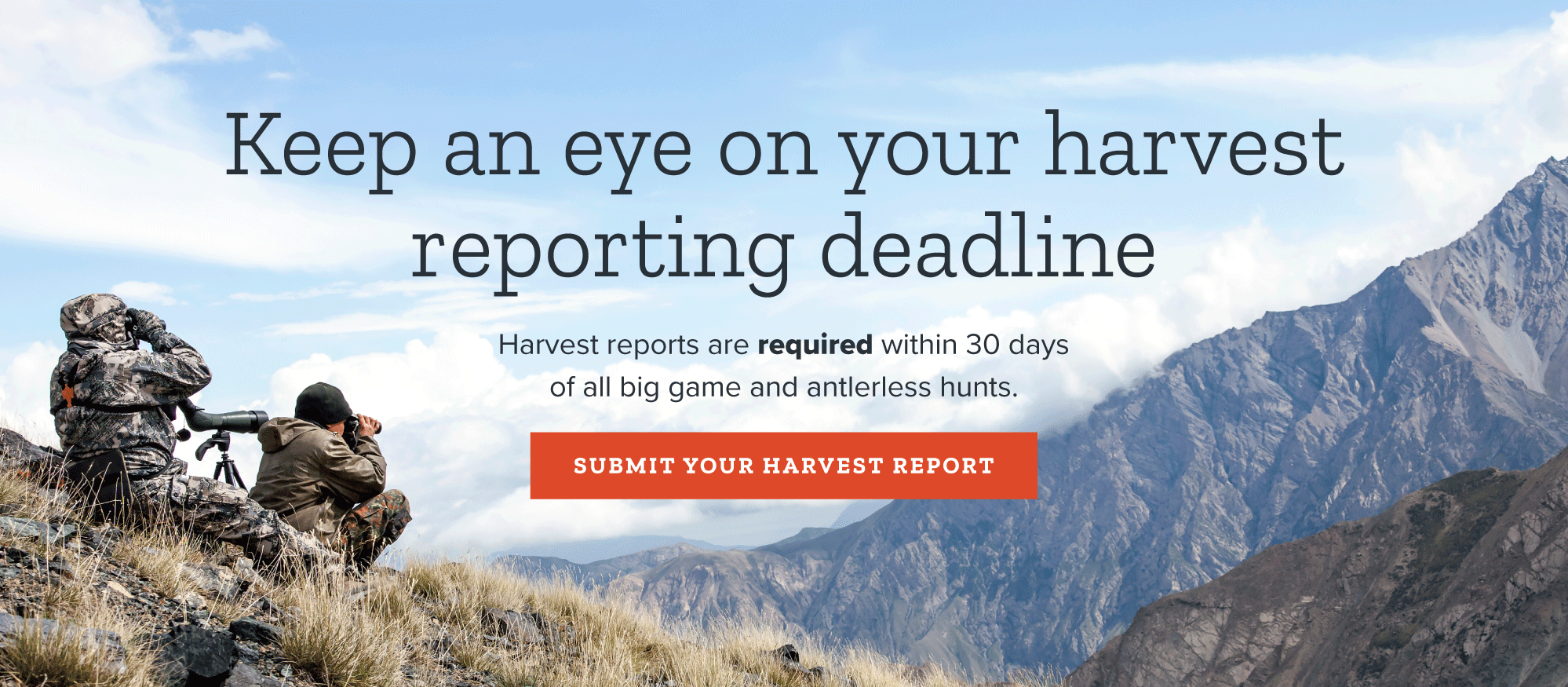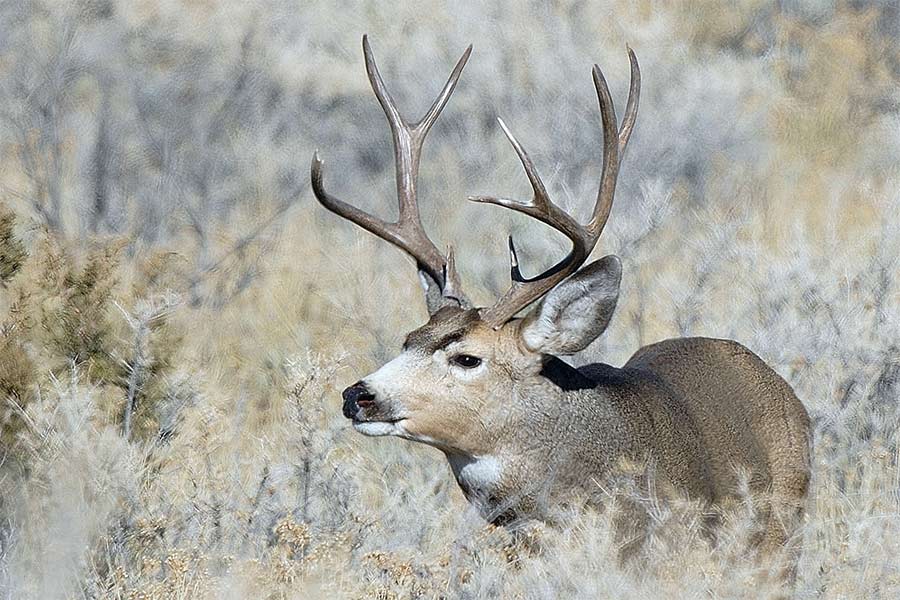What hunters should know for the 2022 Utah deer and elk hunts
Salt Lake City — Several years of ongoing drought conditions have impacted mule deer populations across the state. Here are a few things people hunting deer and elk in Utah this fall should know.
Drought impacts deer by decreasing their body fat (because there are fewer plants and available food sources on the landscape). If the does have poor body fat and nutrition, it leads to smaller fawns, and those fawns have a decreased chance of surviving. If an adult deer has too little body fat at the beginning of the winter — especially a severe winter — it will often not survive the winter months. Recent deer research, conducted in Utah, has shown that the amount of fat deer have going into the winter has more of an impact on their likelihood to survive than the conditions and severity of the winter itself.
Drought conditions have persisted for several years in Utah, and long-term drought-related impacts to Utah's deer and elk populations are still lingering. However, monsoon rains last fall and again this summer have improved vegetative conditions, especially at higher elevations, and deer appear to be in good body condition.
"We still need a few more years with favorable weather patterns to help us fully recover from drought and increase deer numbers," Utah Division of Wildlife Resources Big Game Coordinator Dax Mangus said. "Elk populations are more stable, but could also benefit from increased precipitation and better forage on the landscape."
The current statewide mule deer management plan includes an objective to have just over 400,000 deer across Utah — there are currently an estimated 305,700 deer in the state. While hunting bucks doesn't impact the total population growth rate, the DWR has decreased hunting permit numbers for the last several years, tracking with population-level declines, in order to better manage to the buck-to-doe ratios outlined in the management plans.
Elk are impacted differently by drought because survival of adults typically remains high, while pregnancy rates have been shown to decline during extreme drought conditions. Much of the rest of the state, including central, southern and southeastern Utah, have elk populations that are at or slightly below their population objectives.
The general-season buck deer archery hunt and the general spike and any-bull elk archery hunts are the first big game hunts of Utah's fall season, and they all begin Saturday, Aug. 20. The general-season spike and any-bull elk hunts (with any legal weapon) run from Oct. 8–20, and the general-season buck deer hunt (with any legal weapon) runs from Oct. 22–30.
Whether you are a first-time hunter or a seasoned veteran, it's always a good idea to get a refresher on things that can help you be successful during your hunt. If you are planning to hunt deer or elk in Utah this fall, here are some tips to help you be successful during the archery and rifle hunts:
Do your research before heading out and scout the area in advance
It is a good idea to visit the Utah Hunt Planner before heading out into the field. This great online resource includes notes from the biologists who manage the various hunting units across the state, as well as general information about the units and safety and weather items. You can see information about the number of bucks on the units, compared to the number of does. You'll also find maps that show the units' boundaries, which land is public and private, and the various types of deer habitat on the unit.
"Hunters that have scouted their hunting unit and spent time locating animals before the hunt begins are typically more successful at finding, pursuing and harvesting an animal during their hunt," Mangus said. "Spend time scouting, and if you haven't, consider planning multiple hunting trips during the hunting season. Treat your early hunting dates in the season as hunting and scouting, and try to cover lots of ground to locate animals."
As a reminder, if you use trail cameras to assist in your scouting during the deer or elk hunts, the Utah Wildlife Board voted earlier this year to prohibit the use of all trail cameras (including all non-handheld transmitting and non-transmitting devices) in the take or to aid in the take of big game between July 31 and Dec. 31.
Practice with your equipment
Whether you are archery hunting or using firearms, it's a good idea to practice regularly with your equipment so you are familiar with it and have the skills needed to hit your target.
"Making responsible and ethical shots is an important part of using our wildlife resources wisely," Mangus said.
Hunt away from the road
If you are hoping to harvest a deer or elk this fall, make sure you are hunting in areas away from the road.
"Elk are smart and know how to avoid hunting pressure. They avoid roads, so especially when you are hunting elk, get off the road," Mangus said. "Get out and do some hiking and scouting to find where the animals are."
Look for rugged terrain
When it comes to deer, mature bucks and does are not together during the August archery hunts. So if you are seeing a lot of does in an area, it's a sign that you should probably move to a different spot. Does have to care for their fawns, so they typically prefer areas where there is a lot of water and the terrain is more gentle, like in rolling aspen groves.
"Bucks will gather in herds of little 'bachelor groups,' and they like more rugged mountain terrain," Mangus said. "So, if you are looking for a bigger buck, look for terrain that is harder to access."
Pay attention to the direction of the wind
Another tip for archery hunters is to know the direction of the wind. That way, you can make adjustments and prevent your scent from reaching the animals before you get within range. As the sun heats the ground, the wind direction changes. For example, wind almost always blows up canyons in the morning and down canyons in the afternoon.
To know the direction the wind is blowing, you can buy an inexpensive item called a wind or breeze checker. Releasing powder from the checker will let you know the direction the wind is blowing. Once you've determined the direction the wind is blowing, approach the deer from the side (a 90-degree angle) rather than approaching it with the wind in your face (at a 180-degree angle). If you approach with the wind in your face and then the wind shifts and starts blowing from your back, it'll blow your scent directly to the deer. Approaching from the side reduces the chance that a wind shift will carry your scent to the deer.
Be prepared for the weather and possible emergencies
Hunters should also be prepared for any weather and should always have a first-aid kit and plenty of water with them. The weather in Utah's mountains can change very quickly and go from sunny to snowing in a matter of minutes, so hunters need to be prepared with adequate clothing and supplies.
"We urge hunters to remember the safety basics of hunting with a partner and always make sure someone knows where you are and when you will return," Mangus said. "You can't always rely on cell phones as they may not have reception in the backcountry during your hunt."
Use binoculars and be stealthy
Having success during the archery hunt requires stealth and patience. For example, if you're going to use a spot-and-stalk method, don't just walk through the woods, hoping to find a deer without spooking it. Instead, spend time looking through binoculars at an area to find deer and locate where they're bedding. Then, after they've bedded down, plan your stalk, remaining quiet and doing all you can to approach the deer at an angle that keeps your scent from reaching them.
"Stealth and knowing the wind direction are more important for archery hunters than for rifle hunters, as archery hunters need to get closer to the animal to be effective," Mangus said. "It all depends on the hunter and their skill level, and equipment, but typically, most bows have sights that allow for shooting at 60 yards or less. And typically, the accuracy of most rifles starts to decline between 300–400 yards. I recommend not trying to 'overshoot' with your equipment and to stick with a distance where you have practiced and are comfortable. You should also always know what is beyond your target before taking a shot."
Keep the meat cool
After you harvest a deer or elk, don't hang it in a tree to try to cool the meat. The hot temperatures (especially during the archery hunts) can spoil it. Plus, hanging a deer or elk in a tree might draw bears into your campsite. Instead, cut the animal up in the field and remove the meat from the bone. After removing the meat, place it in a cooler.
"Dry ice can be used to cool the meat quickly and keep it cool for a prolonged period," Mangus said. "You want to keep the meat as cool as possible until you can process it and get it into your freezer."
"Hunting should be fun, and you should enjoy it. It's a great time to see Utah's amazing wildlife and to make memories with your family and friends. Get outdoors this fall and have an adventure or two in our beautiful state."


















